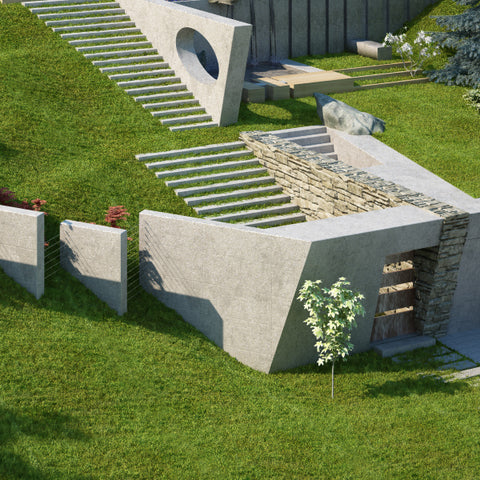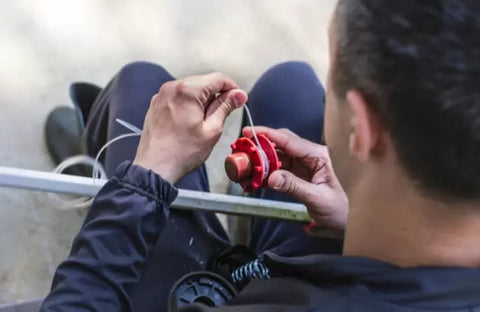In the realm of professional landscaping, achieving pristine and manicured outdoor spaces is an art form. One of the most versatile tools in a landscaper's arsenal, the whipper snipper, wields the power to transform unruly lawns, overgrown edges, and wild vegetation into well-groomed landscapes that leave a lasting impression. However, mastering the art of the whipper snipper requires more than just equipment—it calls for expertise, technique, and a deep understanding of the secrets that professionals have honed over years of experience.
In this comprehensive guide, we delve into the world of landscaping, uncovering the expert advice and insider tips that can elevate your whipper snipper game. Whether you're a seasoned landscaper looking to refine your skills or a homeowner eager to achieve meticulous outdoor spaces, our journey through terrain understanding, equipment selection, technique perfection, timely trimming, maintenance routines, and staying informed will equip you with the knowledge and confidence to tackle landscaping projects with precision.
By the end of this article, you'll not only grasp the essentials of whipper snipper mastery but also be well-equipped to create outdoor spaces that reflect the artistry of professional landscaping.
Let's embark on this journey of landscaping expertise and discover the secrets that can transform your whipper snipper into a tool of precision and artistry.
Understanding the Terrain

Before you embark on any landscaping project with your whipper snipper, it's crucial to take the time to understand the terrain of your garden or outdoor space. This knowledge will help you plan your approach and ensure that you achieve the best results while avoiding any potential obstacles or challenges.
Start by surveying the entire area you intend to trim. Take note of the layout of the land, including any uneven terrain, slopes, or irregular features. Understanding the terrain will allow you to:
-
Plan your cutting path: Knowing the lay of the land helps you strategize where to begin and how to navigate through the space efficiently. It can also help you identify areas that require extra attention.
-
Avoid obstacles: Identify any obstacles in your garden, such as rocks, tree roots, or garden furniture, that could impede your trimming progress. This will prevent accidental damage to both your whipper snipper and the obstacles themselves.
-
Optimize your technique: Different terrains may require adjustments in your cutting technique. For example, on uneven ground, you might need to vary the height of the trimmer head to maintain a consistent cutting height.
By taking the time to understand the terrain, you'll be better prepared to tackle your landscaping tasks with precision and confidence. This proactive approach will not only save you time and effort but also contribute to achieving a well-groomed outdoor space.
Right Equipment for the Job
One of the secrets to achieving professional results with your whipper snipper is using the right equipment for the task at hand. Experts in landscaping understand that different jobs require different tools, and selecting the appropriate trimmer can make a significant difference in your efficiency and the quality of your work.
Here's a breakdown of how to match the trimmer to the job:

-
Light-Duty Trimmer for Grass: If you're primarily dealing with grass trimming and maintenance, a light-duty whipper snipper is your best bet. These trimmers are designed for precision cutting and are ideal for maintaining well-groomed lawns.
-
Heavy-Duty Trimmer for Denser Weeds and Brush: When faced with denser vegetation, weeds, or overgrown areas, it's essential to use a heavy-duty whipper snipper. These models typically have more power and a larger cutting capacity, allowing you to tackle tougher vegetation with ease.
-
Consider Attachment Options: Some whipper snippers come with interchangeable attachments, such as brush cutter blades or edging attachments. These accessories can enhance your trimmer's versatility, allowing you to handle a variety of tasks.
Choosing the right trimmer for the job not only ensures that you achieve optimal results but also prolongs the life of your equipment. Using a trimmer that's well-suited to the task minimizes strain on the machine and helps you maintain a professional standard in your landscaping work.
Perfect Your Technique

Achieving professional-level results with a whipper snipper requires more than just the right equipment—it also hinges on mastering your technique. Experts in landscaping understand the nuances of using a trimmer effectively, and they have refined their methods to achieve precise and efficient cutting. Here are some tips to help you perfect your technique:
-
Develop a Steady, Sweeping Motion: When operating a whipper snipper, it's essential to maintain a steady and sweeping motion. The tip of the trimmer line is responsible for the cutting action, so focus on guiding it smoothly across the target area.
-
Tilt the Head Toward the Area Being Trimmed: To ensure that the trimmer line effectively cuts through grass or vegetation, keep the head of the whipper snipper slightly tilted toward the area you're trimming. This angle allows for optimal contact between the line and the plants.
-
Move Against the Rotation: Most whipper snippers have a rotating head. To achieve a cleaner cut and direct debris away from you, move the trimmer against the direction of rotation. This prevents debris from being thrown back in your direction and creates a neater finish.
-
Maintain Consistent Height: Maintain a consistent cutting height across your lawn or landscape. Varying the cutting height can result in an uneven appearance, so pay attention to the trimmer's height settings and adjust them as needed.
By mastering these techniques, you'll be able to use your whipper snipper more effectively and achieve professional-level results in your landscaping efforts. Remember that practice is key to improving your proficiency, so don't be discouraged if it takes some time to perfect your technique.
Timely Trimming
Timing is a crucial factor in achieving the best results when using a whipper snipper for landscaping. Experts know that choosing the right time to trim can make a significant difference in the outcome of your work. Here's why timing matters and some tips for trimming at the optimal time:
-
Late Afternoon Trimming: Professionals often recommend trimming in the late afternoon for several reasons. First, the grass or vegetation is usually dry at this time, which makes for cleaner cuts. Wet or dew-covered plants can result in uneven trimming and clumping of debris on the trimmer head.
-
Cooler Temperatures: Trimming during the late afternoon also takes advantage of cooler temperatures, which can benefit both the plant and the trimmer. Hot, sunny conditions can stress plants, and excessive heat can affect the performance of your trimmer. Cooler temperatures are more comfortable for the operator as well.
-
Avoid Midday Heat: It's generally best to avoid trimming during the hottest part of the day, typically from late morning to early afternoon. High temperatures can lead to fatigue and discomfort while working, and they may not be ideal for the health of your lawn.
-
Consider Seasonal Variations: Keep in mind that the best time for trimming can vary by season and climate. In some regions, early morning or late evening trimming may be more suitable during the summer months to avoid extreme heat.
By timing your trimming sessions appropriately, you'll be able to work more efficiently and achieve better results. Paying attention to the conditions and choosing the right time of day can make your landscaping tasks more enjoyable and effective.
Maintenance Routines

Maintaining your whipper snipper is a crucial aspect of ensuring its longevity and optimal performance. Experts in landscaping understand the importance of regular maintenance routines and follow a set schedule to keep their equipment in top shape. Here's a breakdown of essential maintenance tasks for your whipper snipper:
- Blade Sharpening: The cutting blades or trimmer line on your whipper snipper can become dull over time. Regularly inspect the blades and sharpen them as needed. Sharp blades result in cleaner cuts and reduce strain on the trimmer's motor.
- Line Replacement: If you're using a trimmer with a nylon line, it's essential to replace it regularly. Over time, the line can wear down, leading to less effective cutting. Follow the manufacturer's recommendations for line replacement intervals.
- Cleaning Filters: Check and clean the air filter and fuel filter (if applicable) according to the manufacturer's instructions. A clean filter ensures proper airflow and combustion, which is essential for engine performance.
- Inspect for Wear and Tear: Periodically inspect your whipper snipper for signs of wear and tear. Look for loose bolts, damaged components, or any issues that may affect its performance. Address these problems promptly to prevent more extensive damage.
- Fuel and Engine Care: If you have a gas-powered whipper snipper, follow proper fueling procedures and ensure you use the correct fuel-oil mixture. Stale fuel or improper mixing can lead to engine problems. Regularly check the spark plug and replace it if necessary.
- Storage: When your landscaping season comes to a close, properly store your whipper snipper to protect it from the elements. Clean the trimmer thoroughly, remove any remaining fuel, and store it in a dry, sheltered location.
Battery Optimization
If you use a battery-powered whipper snipper, proper battery care is essential to ensure it runs efficiently and lasts for years. Here are some tips for battery optimization:
-
Storage: When you're not using your battery-powered trimmer, store the batteries in a cool, dry place away from direct sunlight and extreme temperatures. Avoid leaving them in your trimmer or charger for extended periods.
-
Cooling Period: After using the battery, allow it to cool down for a while before recharging it. Charging a hot battery can reduce its overall lifespan.
-
Charging Practices: Follow the manufacturer's instructions regarding charging practices. Overcharging or undercharging can affect the battery's performance. Some batteries benefit from occasional deep discharges, while others do not.
-
Replace Old Batteries: Over time, rechargeable batteries can degrade and lose their capacity. If you notice a significant reduction in battery life, consider replacing the battery with a new one to maintain your trimmer's performance.
Learn from Mistakes
Even the most seasoned professionals in landscaping make mistakes from time to time. What sets them apart is their ability to learn from these errors and adjust their methods accordingly. Here's how you can embrace the lessons that mistakes offer:
-
Reflection: When you encounter a challenge or mistake in your landscaping work, take the time to reflect on what went wrong and why. Analyze the situation to identify the root cause.
-
Adaptation: Once you've identified the issue, adapt your techniques or strategies to avoid repeating the same mistake. This adaptability is a hallmark of skilled landscapers.
-
Continuous Improvement: Understand that making mistakes is a natural part of the learning process. Each mistake is an opportunity for growth and improvement. Embrace the mindset of continuous learning and refinement.
Stay Informed
The field of landscaping, like many others, is continually evolving with new technologies, tools, and best practices emerging regularly. To stay at the top of your game, consider the following:
-
Industry Publications: Subscribe to industry publications, magazines, and newsletters that provide updates on the latest trends, equipment, and techniques in landscaping.
-
Workshops and Seminars: Attend workshops, seminars, and training sessions related to landscaping. These events offer hands-on experience and the opportunity to learn from experts.
-
Tutorial Videos and Online Resources: Online platforms are a treasure trove of landscaping tutorials and guides. Explore video-sharing websites and landscaping forums to access a wealth of information.
Community Engagement
Finally, don't underestimate the value of engaging with the landscaping community. Both online and local gardening communities can serve as valuable resources for knowledge exchange, advice, and inspiration. Here's how to get involved:
-
Online Forums and Social Media: Join online forums, social media groups, and communities dedicated to landscaping. These platforms provide a space to ask questions, share experiences, and learn from fellow enthusiasts and professionals.
-
Local Gardening Clubs: Look for gardening clubs or associations in your area. These clubs often organize events, workshops, and garden tours that offer opportunities to connect with like-minded individuals.
In conclusion, the journey to mastering your whipper snipper for professional landscaping is an ongoing one. By understanding your terrain, choosing the right equipment, perfecting your technique, trimming at the optimal time, maintaining your equipment, learning from mistakes, staying informed, and engaging with the landscaping community, you'll be well-equipped to achieve exceptional results in your landscaping endeavors.
As you apply the expert advice and insider tips shared here, may your outdoor spaces flourish with the precision and artistry that define professional landscaping. Every trim, every sweep, and every meticulous detail you undertake will be a testament to your dedication to the craft.
In the world of landscaping, every trim of the whipper snipper is a brushstroke on the canvas of nature. With each stroke, you have the power to create outdoor masterpieces that leave a lasting impression. So, step into the world of professional landscaping with confidence, armed with the secrets and wisdom shared here, and let your landscapes speak volumes about your expertise and artistry. Dive into the world of whipper snipper mastery with these expert insights. Join countless satisfied customers who have transformed their landscapes with our high-performance equipment.
Happy landscaping, and may your outdoor spaces thrive under your skilled hands.

